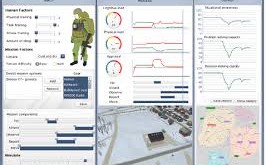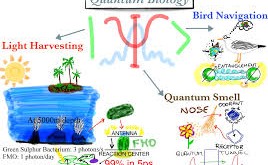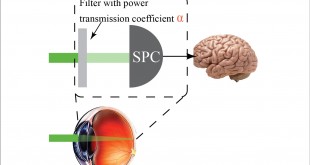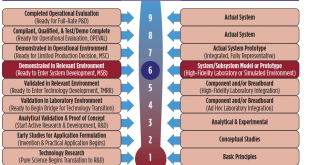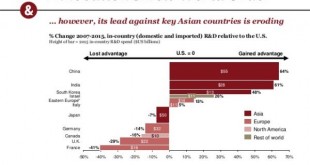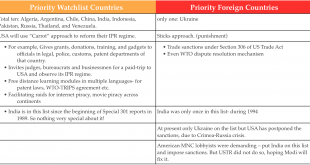Soldiers often have to perform complex tasks in extreme conditions, sometimes approaching or exceeding the limits of their capabilities. Some of the missions the soldiers perform can take weeks, away from in difficult terrain like deserts and mountains which requires maintaining an incredibly high level of physical fitness. Around the …
Read More »Yearly Archives: 2017
DARPA’s QuBE aimed to employ Quantum Biology effects to design next generation navigation, chemical and Magnetic field sensors
The first quantum revolution enabled inventions such as the laser and transistor, the basic building block of computers, when scientists knew the rules of quantum mechanics and built devices that followed those rules. The second quantum revolution is all about controlling individual quantum systems,, such as charged molecules, to a …
Read More »Insitu ScanEagle flying ViDAR Payload enhances Maritime security by spotting and positively identifying objects under clear sun to wind, rain, haze and fog.
ViDAR, or visual radar, is the term coined by Australian computer vision specialist Sentient for a newly developed sensor that combines a high-definition electro-optic (EO) camera with automatic target detection algorithms to detect small maritime targets. The ScanEagle drone from Insitu equipped with the ViDAR payload showcased its newest …
Read More »Solid state cooling based on magnetocaloric, electrocaloric, and mechanocaloric materials advancing to replace present environmentally damaging refrigeration technologies
Current cooling technology, such as that found in fridges and air conditioning systems, exploits the changes in temperature when gases are compressed and expanded. This technology often uses environmentally damaging greenhouse gases. The search for materials with large caloric effects has become a major challenge in material science due to …
Read More »Quantum Biometrics that Exploits the Human Eye’s Ability to Detect Single Photons, may be solution to military and security requirement of hackproof Biometrics
Biometric verification is any means by which a person can be uniquely identified by evaluating one or more distinguishing biological traits. Unique identifiers include fingerprints, hand geometry, earlobe geometry, retina and iris patterns, voice waves, DNA, and signatures. A record of a person’s unique characteristic is captured and kept in …
Read More »DARPA’s Colosseum, world-unique wireless testbed shall catalyze the advent of autonomous, intelligent, and collaborative radio technology
In March 2016, DARPA officials launched the Spectrum Collaboration Challenge (SC2), an initiative designed to ensure that the exponentially growing number of military and civilian wireless devices will have full access to the increasingly crowded electromagnetic spectrum particularly between 9 kHz and 275 GHz, the range allocated by the Federal …
Read More »US DOD Technology Readiness Assessment (TRA) based risk assessment methodology stress on System Prototype Demonstrations in Major Defense Acquisition Programs
Federal agencies spend billions of dollars each year to develop, acquire, and build major systems, facilities, and equipment, including fighter aircraft, nuclear waste treatment facilities, electronic baggage screening equipment, and telescopes for exploring the universe. Managing these complex acquisitions has been a long-standing challenge for federal agencies.Many of the government’s most costly and complex acquisition …
Read More »Majority of Global indexes show innovation is diffusing all over the world, from Europe and US towards Asia,
South Korea is still the world’s most innovative economy ,South Korea topped the 2017 Bloomberg Innovation Index list for the second year in a row, followed by Sweden, Germany, Switzerland, Finland, Singapore, Japan, Denmark, the United States and Israel. South Korea with a score of 89.00 topped the world in R&D …
Read More »Disruptive technologies, Doctrinal innovation and Nuclear modernization under Third Offset Strategy to sustain America’s military dominance for the 21st century
In an Aug. 17 memorandum from Mick Mulvaney, director of the Office of Management and Budget, and Michael Kratsios, deputy assistant to the president in the Office of Science and Technology Policy, the Trump administration outlines its technology-related research and development priorities for fiscal year 2019. It calls for Agencies …
Read More »Growing counterfeit and pirated products demand stricter IPR law enforcement, protection of intellectual property is important for promoting innovation and creativity says EU.
In our increasingly knowledge-based economies, the protection of intellectual property is important for promoting innovation and creativity, developing employment, and improving competitiveness, says EU. The European Commission works to harmonise laws relating to industrial property rights in EU countries to avoid barriers to trade and to create efficient EU-wide systems …
Read More » International Defense Security & Technology Your trusted Source for News, Research and Analysis
International Defense Security & Technology Your trusted Source for News, Research and Analysis
